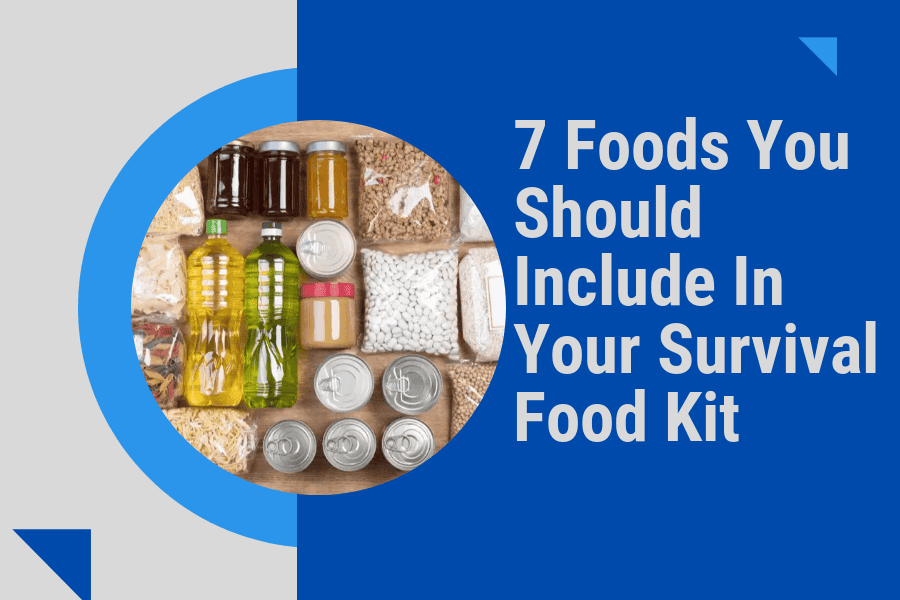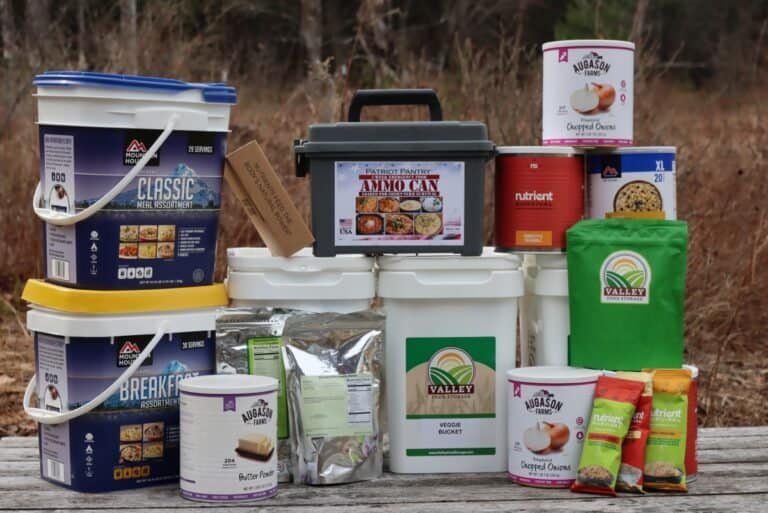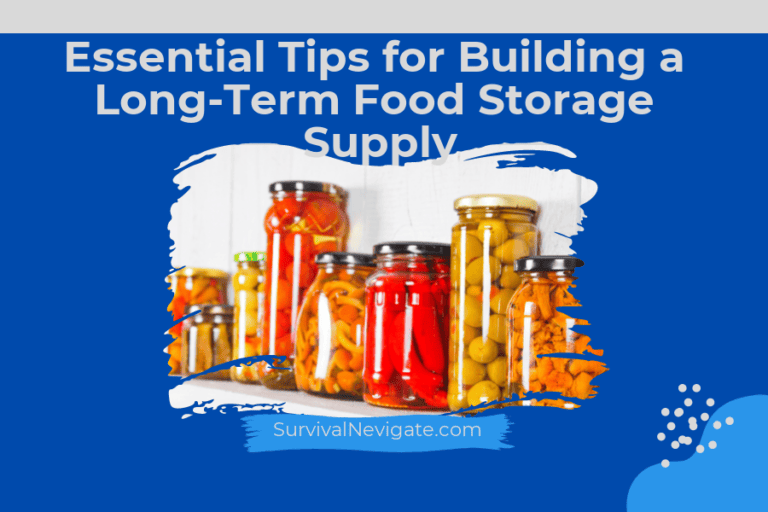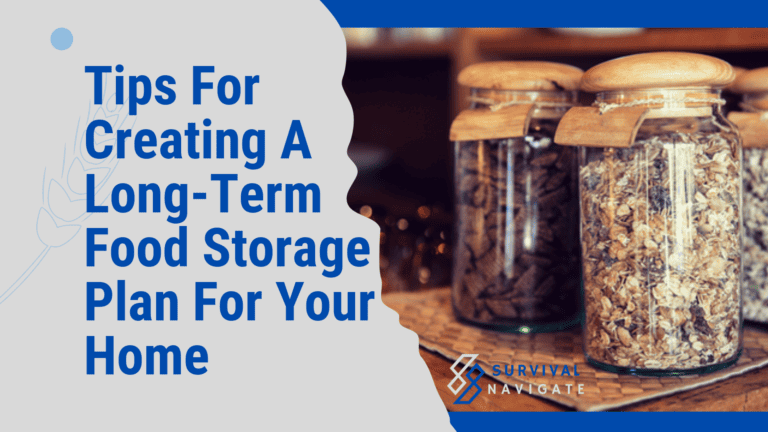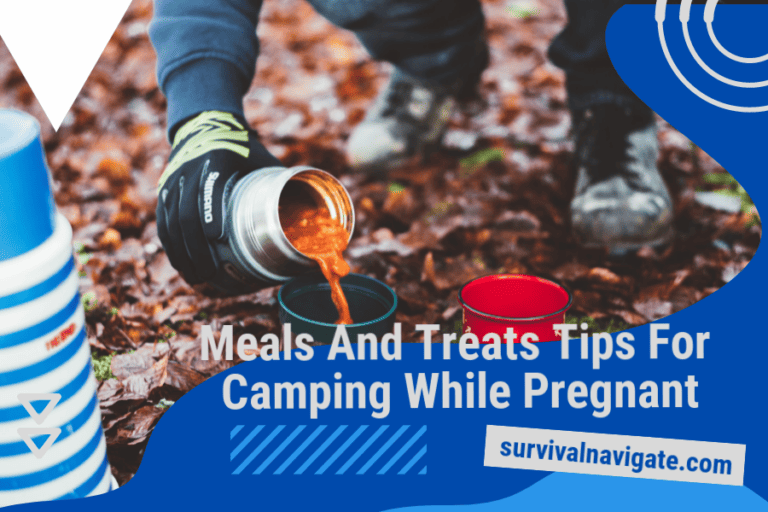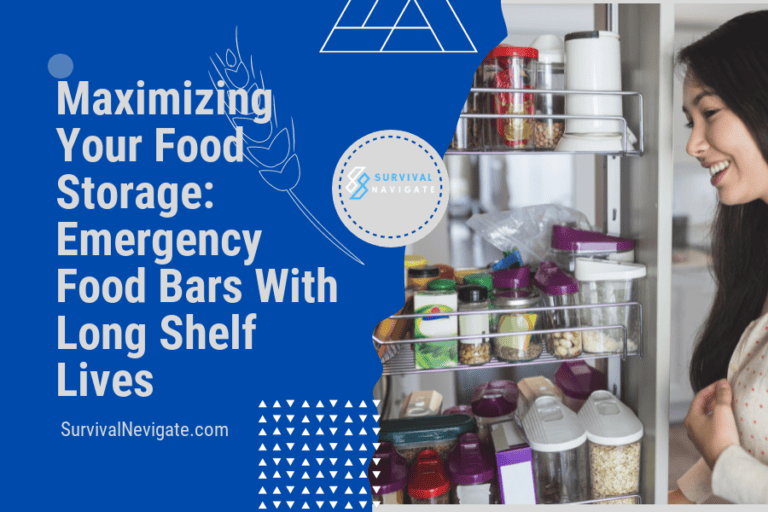7 Foods You Should Include in Your Survival Food Kit
Whether you’re prepping for a hurricane, a zombie apocalypse or just an extended power outage, these 7 foods are essential to include in your survival food kit.
How Much Emergency Food Do You Need?
Natural disasters can cause severe damage and force people to flee their homes and seek shelter, would you be prepared with enough food and water?
The number of people in your family and the amount of storage space you are willing to devote to emergency food rations determines the size of your emergency kit.
If it’s just for yourself, 3,000 calories per day should do the trick; if there are two adults in your household, 4-5k each is ideal; if there are children under ten years old or anyone over 65 years old add 500 calories per person.
Some foods will last longer than others so make sure those fill up most of what you keep on hand. Canned vegetables can stand at room temperature for months before spoiling—a good option when space is limited! Dry goods like rice and beans can also last awhile but they need to be kept cool as well.
When it comes to water, you’ll want to make sure there are enough bottles on hand for everyone in your household or group.
Essential Oils That Can Make Your Food Last Longer
Oils such as peppermint, cinnamon and bay leaf have antibacterial properties that help keep food fresh longer than normal.
A few drops of these oils mixed into olive oil will also speed up the spoilage process of foods like bread dough, which can last many months with proper storage conditions. Some people use essential oils in their survival kits because they don’t only taste good but they also increase the flavor and health benefits of other natural ingredients in your survival food kit .
Stock Up Clean Drinking Water Without

Instead of buying one time use water bottles, purchase a large container for your home such as 5-gallon rigid water container .
These types of containers are easy to store in the fridge or under countertops when not in use; you can access any amount of drinking water you need without creating additional trash and it will cost much less money than buying individual 16 oz bottled waters each week!
Crakers And Dried fruit

Crackers are an excellent source of carbohydrates and last longer than bread. In addition, most crackers are relatively high in protein and fiber. Crackers also contain a variety of vitamins and minerals, depending on the brand you choose.
Many people eat crackers as snacks or with cheese or peanut butter for lunch; however, they can be used for breakfast as well. Be sure to check expiration dates regularly since some crackers expire quickly due to their low moisture content—it is best to store them in airtight containers at room temperature out of direct sunlight.
Dried fruit contains many essential nutrients like vitamin C (bananas), thiamin (dates) riboflavin (apricots), niacin (peaches), pantothenic acid (raisins), calcium, phosphorus and potassium. All dried fruits except raisins have significant amounts of iron per serving because vitamin C improves iron absorption from plant sources.
Freeze-dried meals
If you’re looking for a convenient, affordable way to stock up on emergency food rations that are ready when you need them, Freeze-Dried Food is just what the doctor ordered. Whether it’s breakfast foods or dinner entrées, our line of freeze-dried meals and desserts can be stored in your pantry for whenever disaster strikes and/or when camping adventures take longer than expected!
Jerky and dehydrated meats
Dehydrated meats, or jerky as it is commonly called, have been around for thousands of years. One of the oldest forms of preserving meat was drying it in the sun and wind.
Native Americans were known to dry meat by hanging strips over a fire.
There are so many varieties of flavors that it can be tough for a consumer to choose a specific flavor.
Power bars
Power bar is a great item to have in a survival kit because it can provide you with a lot of energy. The best part about the power bar is that it is easy to carry around and easy to eat.
The power bar can be used for several different things, including providing you with energy to keep going in the case of an emergency, or to keep yourself from getting hungry while you are out in the wilderness. The power bar can also be used to supplement your diet if you are a vegetarian or a vegan.
Dried fruits
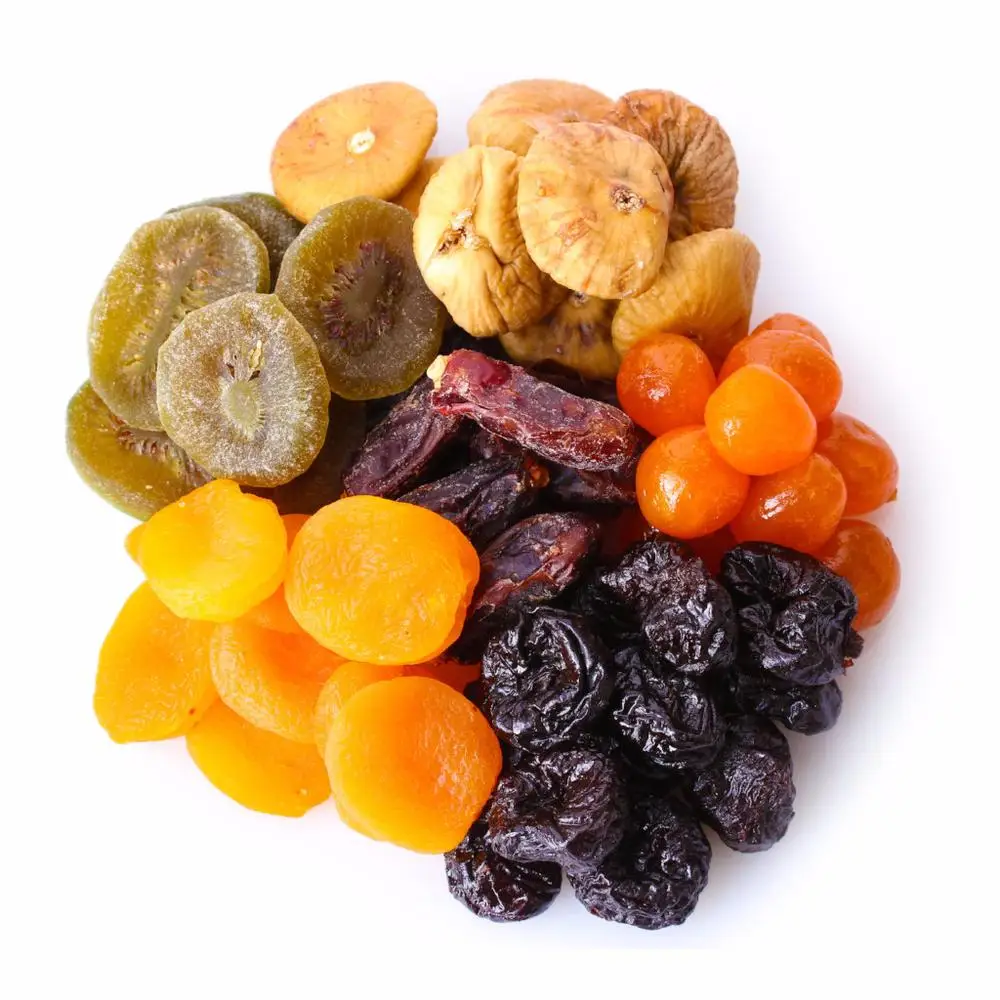
The first dried fruit that you should add to your survival kit is raisins. They are a good source of energy and they can be added to almost anything. Raisins are a great source of carbohydrates and can be used to make bread and other baked goods. You can also add them to soups and stews. They are also good for making trail mix or as a topping for desserts.
Some of the most important dried fruits that you can add to your survival kit are figs, dates, raisins, and apricots. These fruits can help you to survive for a long time.
Canned Meats
Canned meats require no refrigeration and they will last indefinitely. Some people prefer to cook their canned meat before eating them, but this isn’t necessary. Simply place the meat back in its can and heat it in a microwave oven or on top of a stove burner. You can also fry the cooked canned beef in a skillet.
Canned vegetables, such as green beans, carrots, and peas
Canned vegetables can be eaten without any preparation. And because you can buy them at the store, you won’t need to worry about running out.
These can also be used as a substitute for fresh vegetables. And they’re usually pretty good. That’s why you should always have them in your survival food kit.
There are some important things to keep in mind when choosing the right vegetables to include. You want to make sure that they’re easy to cook with, and that they store well.
Before you buy any of your canned vegetables, you’ll want to look for some specific things.
Look for these on the label:
Sugar content
This is because the sugar content will impact the shelf life of the product.
You don’t want to buy a product that contains too much sugar, because this will increase the risk of spoilage.
Sodium content
This is another consideration.
You want to make sure that you buy products that don’t have too much sodium, because you don’t want to consume too much salt.
Look for the word “no” on the label.
Vegetarian
Some people may be allergic to gluten.
You want to make sure that your survival food kit contains no gluten, and this is a good way to know.
Ingredients list
You’ll also want to make sure that the product you’re buying has an ingredients list.
This means that it has a list of the products that are used in the manufacturing process.
Dry pasta and pasta sauces
If you’re looking for a quick meal that’s ready to eat, pasta and jarred sauces are convenient (and cheap). But how long do they last? Dry pasta is shelf-stable on its own. You can keep it in the pantry or cupboard until it expires, but after opening dry pasta packages should be used within one year.
Pasta salad dressings contain mayonnaise or oil which can go rancid over time; if stored at room temperature these dressings should be consumed within two days.
As for jars of sauce, store them unopened at room temperature until opened; after which they will last about three weeks in your fridge. If frozen, don’t thaw before reheating—simply add 10 minutes to the simmering process once defrosted.
If someone in your household has dietary restrictions such as gluten intolerance , look for gluten-free pastas made from beans or chickpeas rather than wheat flour and check ingredients carefully on sauce labels as some may contain gluten.
Managing Food without Power
If your refrigerator or freezer has been without power for more than four hours, the food inside should be thrown away.
-Discard any perishable food (such as meat and dairy products) that has a temperature of 40 degrees Fahrenheit or higher.
Any already cooked food can be eaten if it still looks and smells normal when reheated to 165 F in an oven or under a broiler.
Conclusion
The keys to surviving a long-term power outage are the same as they were in any other type of disaster: stay calm, take care of your family and get organized.
Your first priority is to keep your family safe and healthy. If you have time, get out of your home and find somewhere warm outside for everyone to huddle together.
The goal here is not just to survive but also to protect those who cannot fend for themselves from the elements.
When it comes to food storage, make sure that you’re prepared for anything that could happen during an extended power outage.
Add items such as dried beans, rice and pasta pasta sauces , canned meats , dry pasta , canned vegetables , jams and jellies to your emergency food kit .

